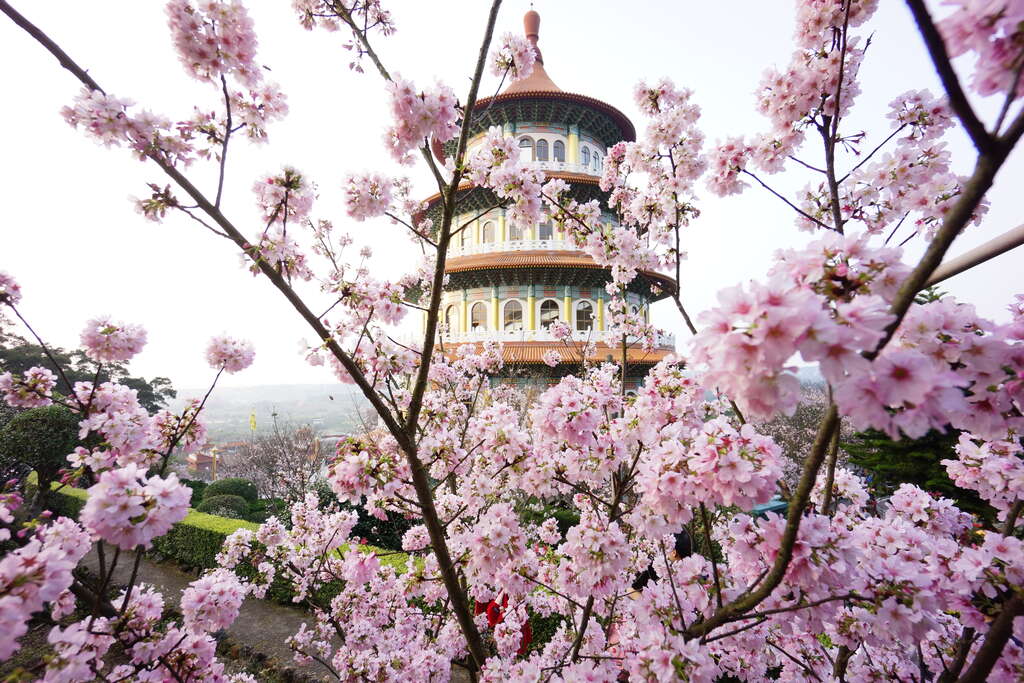Wuji Tianyuanguang Introduction
Tamsui Tianyuan Temple is located on the northwest side of the Datun Mountain Range, approximately 5 kilometers from Tamsui District and Tamsui MRT Station. Completed in 1985, the main hall enshrines the Supreme Elder and the main deity is the Jade Emperor. In 1992, the "Supreme Tianyuan True Altar" was added, standing 200 meters tall with five floors and a circular exterior that reaches a diameter of 108 meters, making it magnificent and spectacular. Each hall enshrines various Buddhas from the Supreme Realm. During the cherry blossom season, the grand altar and cherry blossoms create a beautiful scene worth visiting. Tamsui Tianyuan Temple is divided into the back mountain and the area around the altar, with different species of cherry blossoms blooming at slightly different times. The back mountain features triple-color cherry blossoms in pink, white, and peach red, which bloom earlier. The highlight around the altar consists of Yoshino cherry blossoms, which bloom about a month later than those in the back mountain. During this time, the number of tourists admiring the cherry blossoms peaks! At night, the altar is also illuminated, providing a unique charm for nighttime viewing. When taking photos of cherry blossoms at Tianyuan Temple, it's essential to capture the overall scene of the cherry blossoms alongside the altar, with the back mountain cherry blossom forest being the most suitable spot. For optimal lighting, the best time to take photos is in the morning, as the colors of the cherry blossoms will look most beautiful under the sunlight. During the spring bloom, it becomes a popular blooming location. By combining Taiwan's native mountain cherry blossoms with Japanese Yoshino cherry varieties, the cherry blossoms here present a lovely pink hue, with the delicate blossoms reflecting the spirit of spring. Each year, from January to April, visitors can see the mountains filled with blooming Taiwan mountain cherry blossoms and Yoshino cherries, creating a passionate spectacle that attracts large numbers of tourists eager to experience their beauty. (Source: New Taipei City Tourism Website)





































